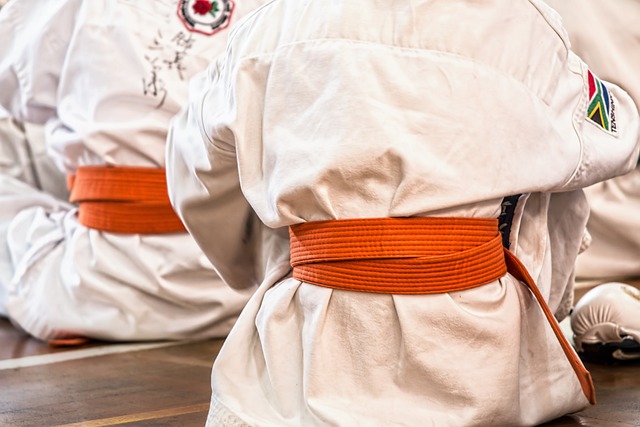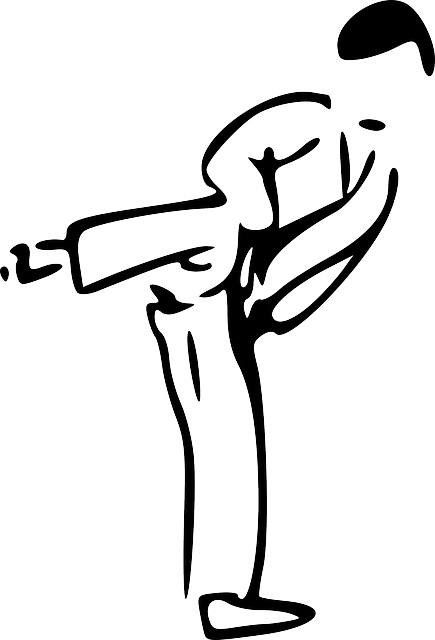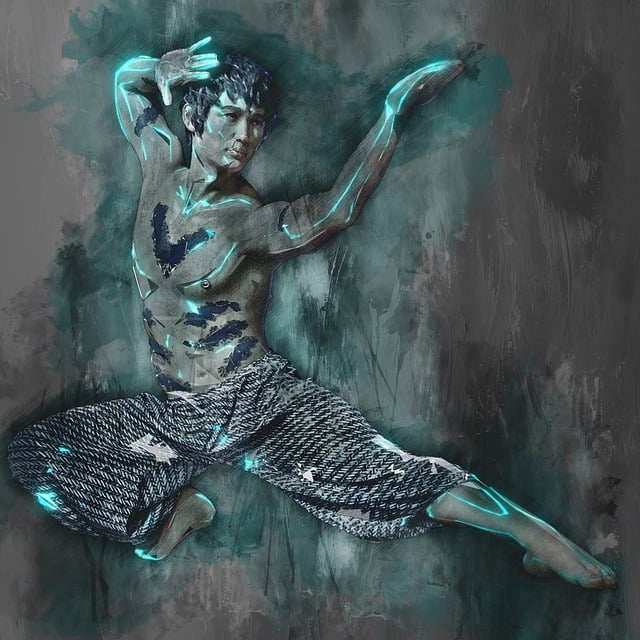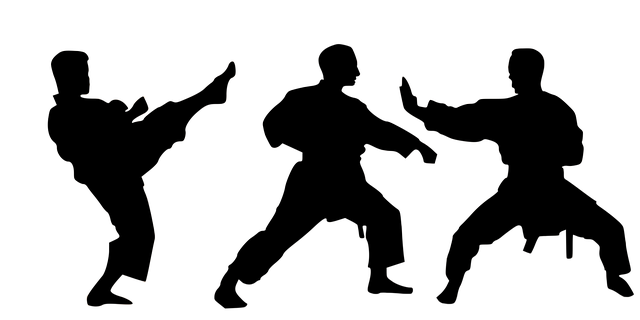The karate gi, a traditional garment deeply rooted in martial arts culture, is both a symbol of respect for karate's traditions and a practical uniform for training. Originating from the attire of Japan's samurais, the gi has evolved to represent humility and purity in its clean, white design, while offering mobility and durability suitable for the physical demands of karate practice. The gi consists of a jacket, trousers, and belt, which denotes rank; different styles of karate have specific preferences for the cut, material, and design of their training outfits, influenced by the level of skill of the practitioner. Selecting an appropriate karate gi is essential for comfort, functionality, and showing reverence for the martial art. It's also crucial to maintain your gi in optimal condition through proper cleaning, air drying, avoiding harsh chemicals, and storing it properly to ensure its longevity and respectful use in practice. Regular maintenance helps preserve the integrity of the garment and protects the practitioner from potential injury.
Discover the essence of traditional martial arts attire with our exploration into what constitutes a karate uniform, commonly known as a gi. This article delves into the historical origins and significance of the gi, detailing its key characteristics that distinguish it from other martial arts uniforms. Whether you’re a novice or an advanced practitioner, understanding how to choose the right gi for your specific karate style and rank is crucial for both performance and respect for the tradition. Additionally, we’ll guide you through the proper maintenance and care to ensure your gi remains in impeccable condition, reflecting your dedication to the art. Join us as we unravel the intricacies of this quintessential martial arts garment.
- Understanding the Significance of the Karate Uniform: The Gi's Purpose and History
- Key Characteristics of a Traditional Karate Gi
- Choosing the Right Gi for Different Karate Styles and Ranks
- Maintenance and Care: Keeping Your Karate Gi in Prime Condition
Understanding the Significance of the Karate Uniform: The Gi's Purpose and History

In the realm of martial arts, the karate uniform, commonly known as a gi, serves as more than mere attire; it is a symbol of tradition and respect for the discipline. The gi’s design has historical roots that can be traced back to ancient Japan, where similar garments were worn by samurais. Over time, the gi has been adapted to suit the needs of martial artists practicing various forms of combat, including karate. The traditional white cotton outfit is not only a uniform but also a representation of humility and purity in both intention and practice. It allows practitioners to move freely during training, facilitating the performance of techniques with optimal range of motion. Additionally, the gi’s fabric and fit are chosen for their durability and ability to withstand the rigors of karate practice, ensuring longevity and safety for the individual wearing it.
The karate outfit, or gi, is structured to be both functional and symbolic. It consists of a jacket, trousers, belt (obi), and sometimes knee-pads and hand protectors, depending on the training intensity and focus. The jacket, known as an “uchiwa de,” has long sleeves that tuck into the wrist openings to prevent them from catching on anything during practice. The trousers, or “hakama dabi,” are typically straight-legged for ease of movement. The belt tied around the waist serves a dual purpose: it holds the garment in place and also indicates the wearer’s rank within the martial art. The gi’s design and material have been refined over centuries to meet the demands of karate practice, making it an integral part of the martial artist’s experience and expression of their skill and dedication.
Key Characteristics of a Traditional Karate Gi

A traditional karate uniform, often referred to as a “karate gi,” is more than just an attire; it’s a symbol of discipline and respect for the martial art. The gi serves as a standardized outfit that practitioners wear during training sessions, competitions, and gradings. It is crafted from heavyweight cotton or hemp fabric, which provides durability while allowing for ease of movement during practice. The jacket, known as “uyede,” is designed to be belted at the waist with a leather or cloth obi sash, emphasizing the importance of proper posture and alignment in karate movements. The trousers, called “are-gi,” are straight-legged and secured with ties or buttons, offering both functionality and modesty.
Key characteristics of a traditional karate gi include its simplicity and practicality. It typically features a plain, often white, color to reflect the martial art’s principles of honesty and humility. The jacket is relatively short in length, ending just above the hip, with long sleeves that are either left untailored or hemmed without cuffs. The trousers extend to the ankle and are designed to be loose-fitting but not excessively baggy, ensuring freedom of motion while maintaining a level of formality. The traditional gi also features a set of patches on each sleeve, traditionally depicting a crane or dragon, which symbolize the values of karate: strength, balance, and agility. These patches can vary in design depending on the dojo’s lineage or the practitioner’s personal preference. When choosing a karate outfit called a gi, it is essential to select one that adheres to these traditional attributes while also considering the individual’s comfort and personal style within the realm of karate etiquette and discipline.
Choosing the Right Gi for Different Karate Styles and Ranks

When practicing karate, selecting the appropriate gi—a traditional karate outfit—is crucial for both comfort and respect for the discipline. Each style of karate may have specific requirements or preferences regarding the gi’s cut, material, and design. For instance, Shotokan practitioners often prefer a more tailored fit to facilitate clean lines during performance-oriented kata and kumite. In contrast, styles like Shito-ryu might favor a slightly looser fit to allow for greater mobility in techniques that emphasize full-body engagement.
The rank of the karateka also plays a role in choosing the right gi. Beginners typically start with a white gi, which is both simple and respectful. As practitioners advance through the kyu ranks, they may choose to differentiate their experience level with colored belts that are worn over the traditional white gi. Once reaching black belt status, some karateka opt for a darker-colored gi to signify their advanced skill and maturity within the art. The choice of color and fabric can also be influenced by personal preference and regional customs. It is important to consider the specifications of your chosen style and rank when selecting a gi, as this garment not only represents your commitment to the discipline but also plays a role in the functionality and expression of your karate practice.
Maintenance and Care: Keeping Your Karate Gi in Prime Condition

Maintaining your karate outfit, commonly known as a gi, in prime condition is essential for both the respect of the practice and the longevity of the garment. Regular washing is key to keeping your gi fresh and clean. After each training session, it’s advisable to air out your gi to remove any perspiration odors and reduce bacteria growth. When washing, use a mild detergent and avoid fabric softeners or bleach, as these can damage the cotton fabric and affect the white color typically associated with karate gis. To maintain the shape and integrity of the jacket and trousers, do not wring them after washing. Instead, allow them to drip dry away from direct sunlight, which can cause fading and weakening of the fibers. Proper folding and storage also play a role in preserving your gi; hang it on a sturdy hanger with shoulders wide enough to prevent shoulder creases, and store it in a cool, dry place. Repairing any tears or rips promptly will maintain the garment’s structure and prevent injuries during practice. Regularly inspecting your gi for signs of wear and tear will ensure that it remains a respectful and functional part of your karate training regimen.
In concluding our exploration of the karate uniform, it’s clear that the traditional garb, commonly referred to as a ‘gi,’ serves as more than mere attire; it embodies the rich history and principles of karate practice. A karate outfit called a gi is an integral component of the martial art, reflecting its Japanese origins and facilitating the learning and execution of techniques. Whether you are a novice or an experienced practitioner, selecting the appropriate gi for your style and rank is essential to honoring the discipline and tradition of karate. Proper maintenance and care ensure that your gi remains a testament to your commitment and respect for this martial art. As you continue on your martial arts journey, remember that your uniform is not just a piece of clothing but a symbol of your growth and dedication within the art of karate.
